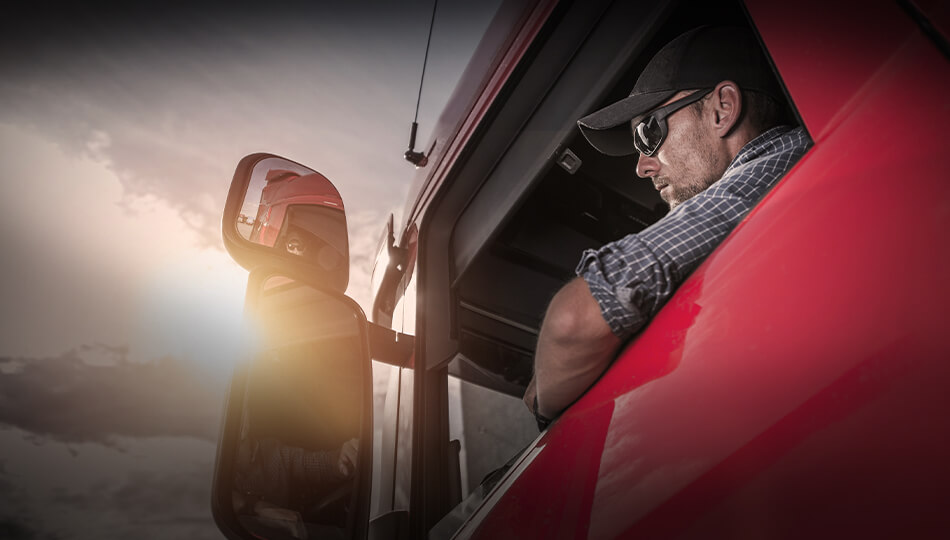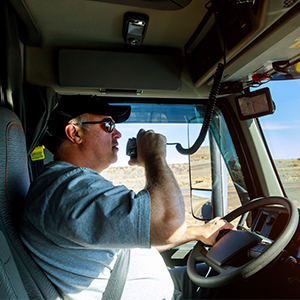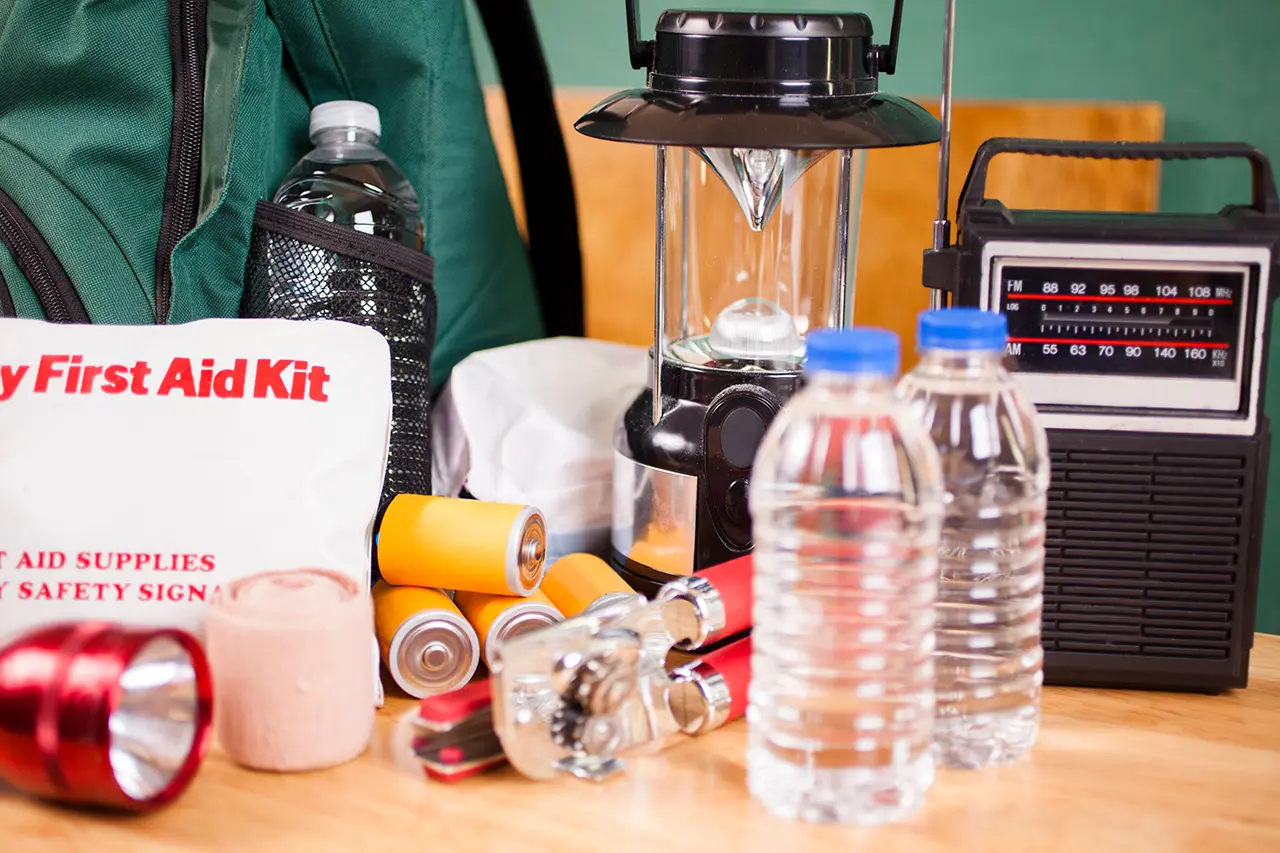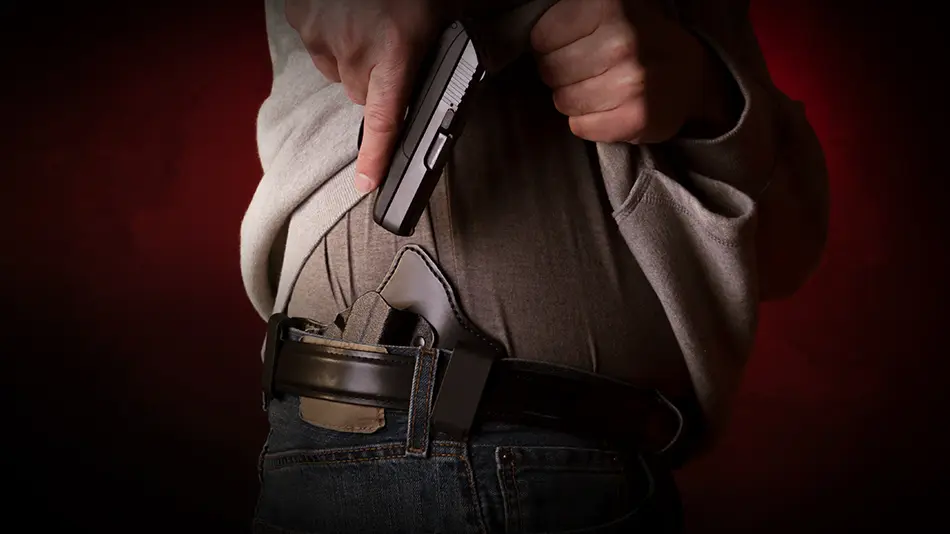
American truckers have been the topic of many conversations over the last few years. Supply-chain issues caused by the global pandemic highlighted the vital role that truck drivers play in our society. Now, truck driver protests over mask mandates, vaccine requirements, general pandemic restrictions, and the overall state of the union have American truckers in the spotlight again.
One of the more common questions inside the self-defense community is which self-defense weapon is best for a truck driver. You can find discussions where the relative merits of guns, pepper spray, tasers, clubs, and any number of other weapons are debated. However, there’s something important to keep in mind when examining which self-defense weapon might be best for situations that truck drivers might find themselves in.
Truck drivers oftentimes find themselves traveling through many different jurisdictions, and it’s not always the case that the self-defense weapon a truck driver selects will be legal in every jurisdiction their route takes them through. So that begs the question, which self-defense weapon is legal to take anywhere?
Are People Focused on the Wrong Thing?
While it’s easy to focus on which self-defense weapon is best in any given situation, tool fixation ignores an important reality.  All self-defense weapons are inanimate objects with zero will of their own. It is the person who selects and carries the self-defense weapon who ultimately directs the weapon’s use. When the conversation centers around the tool instead of the user, it ignores that fact that it is the user who solves any self-defense problem that may arise. Weapons are simply tools the user has available to them. When the conversation centers around tools versus users, it can be easy to think that unless someone has a tool available to them, they cannot do anything to keep themselves safe. This is simply not the case.
All self-defense weapons are inanimate objects with zero will of their own. It is the person who selects and carries the self-defense weapon who ultimately directs the weapon’s use. When the conversation centers around the tool instead of the user, it ignores that fact that it is the user who solves any self-defense problem that may arise. Weapons are simply tools the user has available to them. When the conversation centers around tools versus users, it can be easy to think that unless someone has a tool available to them, they cannot do anything to keep themselves safe. This is simply not the case.
Some truck drivers, either due to company policy or the route they drive, cannot always have a self-defense weapon with them. There is only one tool that truckers and any other self-defense minded person can always have with them, and that is their own mind. So, if the best self-defense weapon anyone can have is their own mind, then mindset and knowledge become the most important things to focus on.
You Win 100% of the Fights You Avoid
Cultivating a mindset of avoidance is one of the most important things that a trucker, or any other person, can do to keep themselves out of trouble. To be clear, avoidance does not mean that you aren’t prepared to defend yourself if you’re absolutely forced to. Cultivating a mindset of avoidance simply means you approach every encounter you have with someone understanding that it has the potential to turn into a violent encounter. Another important aspect of avoidance is recognizing that certain places, and certain behaviors, expose someone to more risk.
So, what does a mindset of avoidance look like with both of those things in mind? Put very simply, do everything you can to deescalate any contentious interaction you find yourself having with someone else, and practice good situational awareness when you are out in public.
Enjoying this content? Find out how you can get more sent straight to your inbox.
The Trouble with Telling Someone to be Situationally Aware
Situational awareness as a concept is amazingly important, but it’s useless without the correct frame of reference. If you don’t know that something is potentially dangerous, you can be completely “aware” of its presence and do nothing to mitigate the risk it represents to you. The simple act of being more aware of your surroundings isn’t going to do you much good if you don’t know what to look for.
Everyone has experienced a moment of distraction in public. Whether it’s a notification on your phone, something your boss said to you, or just thinking about what needs to be done the rest of the day, it’s easy to get distracted. The simple fact of the matter is that it’s impossible to be 100% aware of your surroundings 100% of the time. Most of the time, the consequences for being distracted are non-existent. But in certain situations, allowing our attention to wander can have life-changing results.
Truck drivers interested in self-defense need to know what they’re looking for and when they should be looking for it.
What Should Truck Drivers Look For?
 Pre-incident, or pre-assault, indicators are what truck drivers and self-defense minded people should be looking for. Certain pre-incident indicators might be obvious. If it’s the middle of the summer and someone wearing a ski mask and carrying a knife approaches you in a parking lot, any reasonable person might assume they were about to be robbed or attacked. Other pre-incident indicators might seem relatively harmless. A person standing by an entry to a retail location who begins moving toward you across a parking lot doesn’t seem particularly threatening at face value. However, movement initiated by your presence or proximity is a common pre-incident indicator, especially if the movement is directly toward you or places the person in your path of travel.
Pre-incident, or pre-assault, indicators are what truck drivers and self-defense minded people should be looking for. Certain pre-incident indicators might be obvious. If it’s the middle of the summer and someone wearing a ski mask and carrying a knife approaches you in a parking lot, any reasonable person might assume they were about to be robbed or attacked. Other pre-incident indicators might seem relatively harmless. A person standing by an entry to a retail location who begins moving toward you across a parking lot doesn’t seem particularly threatening at face value. However, movement initiated by your presence or proximity is a common pre-incident indicator, especially if the movement is directly toward you or places the person in your path of travel.
There are many other pre-incident indicators that truck drivers should make themselves aware of, such as target glancing, grooming cues, and others. While information regarding pre-incident indicators for regular everyday people can be difficult to find outside of a training class, at least one national level instructor has posted their coursework regarding pre-incident indicators online.
When Should They Look for It?
Once someone knows what they’re looking for, the question of when they should be looking for it becomes very important. A total lack of awareness can certainly make someone more susceptible to criminal assault, but hypervigilance can be harmful for entirely different reasons. Ideally, someone’s awareness will dial up and down based on the situation and environment, with awareness increasing at times when there is more risk of an attack and decreasing when an attack is less likely. It’s important that someone actively work to manage distractions when more awareness is called for.
Transitional spaces (the physical space that someone must pass through between one place and another) represent one of the largest areas of concern for truck drivers. Truck stop parking lots are what members of the training community consider to be a transitional space, and they are a prime example of when a truck driver should devote more attention to their surroundings and the people in it.
Knowing the Law Is Critical
Knowing how the law works before, during, and after a self-defense incident is critical. While it’s easy to focus on self-defense weapons and which one is best, the most effective weapon in the world won’t do someone any good if they don’t use it because they don’t know the law—or worse, they do use it when it isn’t legal to do so. U.S. LawShield® members receive 24/7/365 access to a non-emergency attorney hotline where they may ask any firearm or self-defense law question they have. Members who select multi-state protection have the added peace of mind that comes from knowing their U.S. LawShield membership benefits are with them no matter which state they’re in.
Everywhere You Go, There You Are
At the end of the day, the only self-defense weapons a truck driver can be sure they’ll have with them 100% of the time is a U.S. LawShield membership and their own mind. Practicing active avoidance, de-escalation, and situational awareness can help keep someone from finding themselves in a self-defense incident; but if an incident can’t be avoided, knowledge of the law and a plan to handle the legal aftermath can be the difference between life, a lengthy prison sentence, and death.
Your Protection Starts Here!
The information provided in this publication is intended to provide general information to individuals and is not legal advice. The information included in this publication may not be quoted or referred to in any other publication without the prior written consent of U.S. LawShield, to be given or withheld at our discretion. The information is not a substitute for, and does not replace the advice or representation of a licensed attorney. We strive to ensure the information included in this publication is accurate and current, however, no claim is made to the accuracy of the information and we are not responsible for any consequences that may result from the use of information in this publication. The use of this publication does not create an attorney-client relationship between U.S. LawShield, any independent program attorney, and any individual.





Leave A Comment